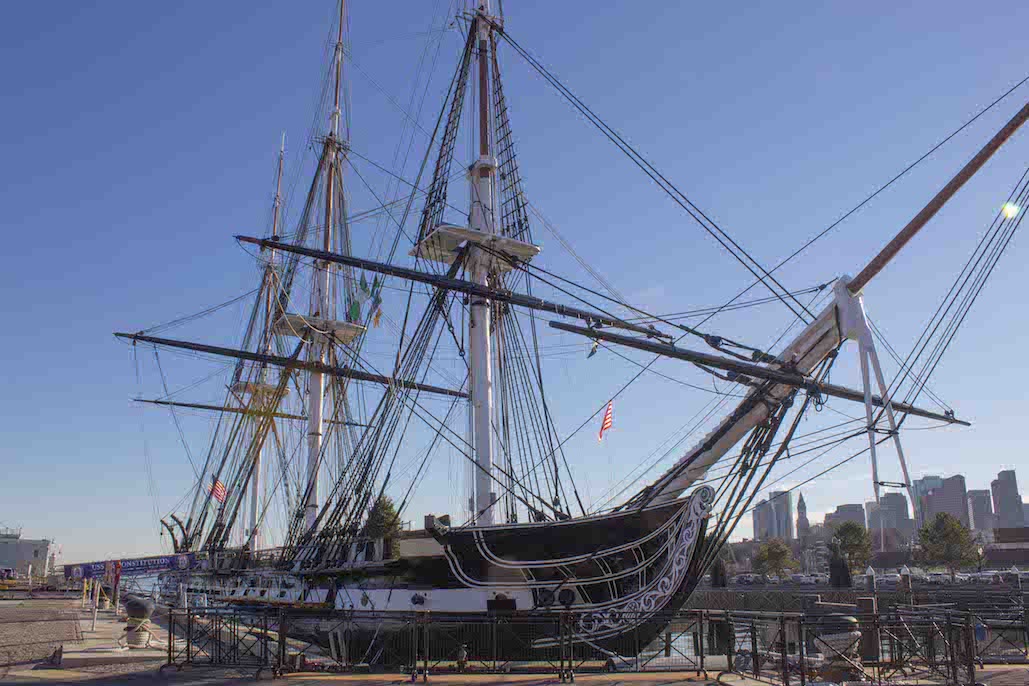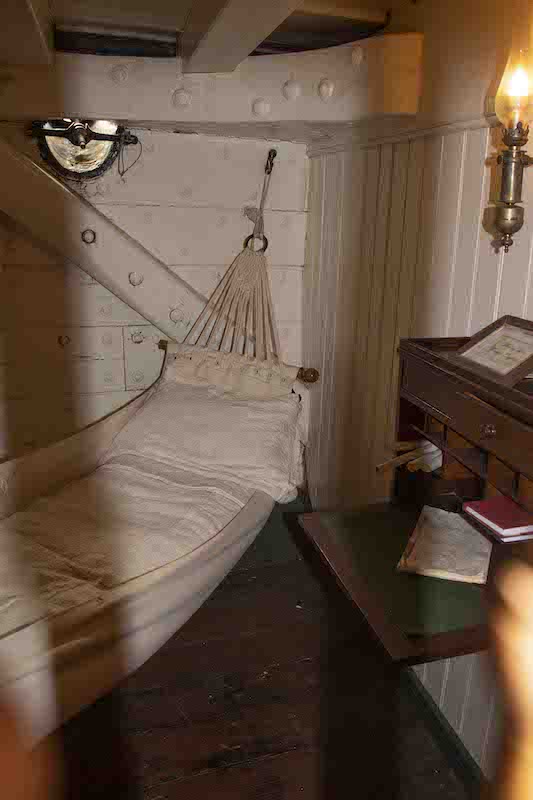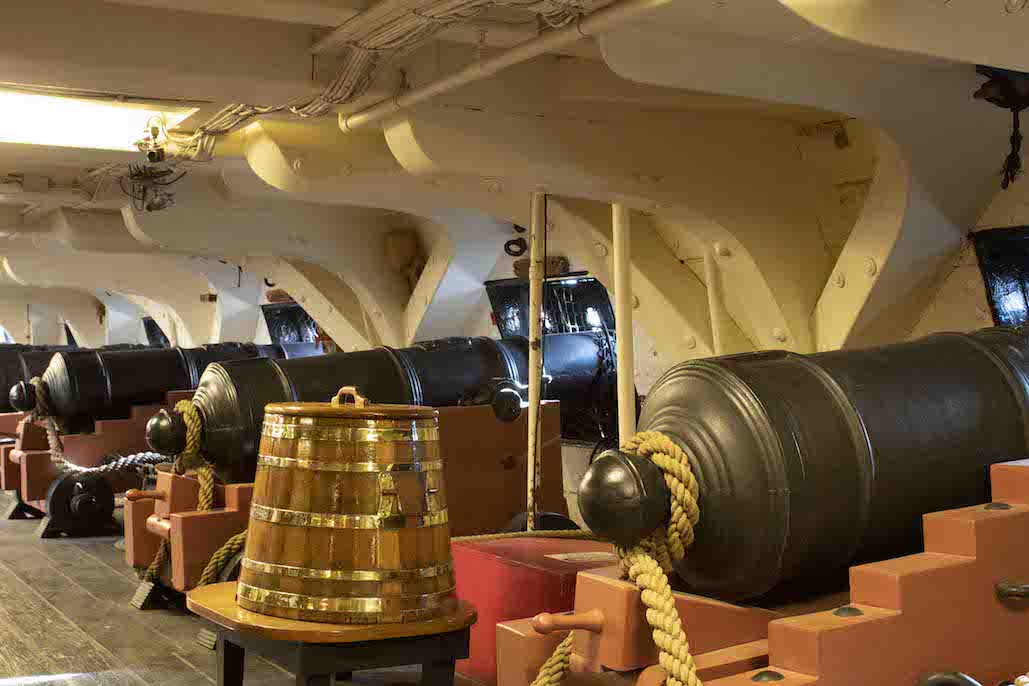Featured Image: Captain Jackson’s Historic Chocolate Shop at the Old North Church
Boston is well known as the “walking city,” and for good reason. When the weather is right, there is nowhere in Boston Proper that a reasonably fit adult cannot walk to in a short amount of time. But with so many options, you need a plan. That’s where Boston’s Freedom Trail can be most helpful.
Many visitors come to Boston with the goal of taking in some of the city’s rich history. From the initial Puritan settlers up to and including the American Civil War, there are no lack of sights and attractions to see. The Freedom Trail aims to pack the best of Boston’s history into a single walking tour that includes sixteen separate sites over 2.5 miles. The route is conspicuously marked by a double line of red bricks that blaze the trail from start to finish, making it very easy on those that are new to Boston.
While the Freedom Trail includes sixteen sites, the truth is that not all of them are worthy of your time. Some will draw you back into history where you can envision the onset of the nation’s independence, while others are insignificant to the point that they have been leased out as commercial space. This article will provide you with the guidance that you need to not waste precious time on sites of reduced significance. It will also give you a primer on recommended sites and boost your appreciation for those destinations when you arrive.
Knockabout’s Top Six
There are six points of interest on the Freedom Trail that you should see while touring Boston. Any fan of American history will enjoy seeing these sights, many of which are free or very low cost. The abridged route covers 2.1 miles of walking and you should be able to cover it in about four to five hours without stopping for lunch. But of course, you should stop for lunch. After all, you will be walking through the North End, where some of the best Italian food this side of the Atlantic can be found.
1. USS Constitution
Start your tour of the Freedom Trail in Charlestown. You can walk or take the Orange line to to the USS Constitution, which resides in the decommissioned Charlestown Naval Shipyard. Although the shipyard is no longer an active naval installation, the USS Constitution itself is in fact still a commissioned naval vessel, in fact the oldest vessel in the US Navy. Although the facility is administered by the National Park Service, tours of the ship are given by active duty sailors. The cost is free to all. However, if you would like to visit the USS Constitution Museum opposite the visitor’s center, then a $10-$15 donation for adults and $5-$10 per child is suggested. Personally, I think that the ship tour is excellent and combined with the few exhibits in the visitor’s center will be enough to satisfy your interest.
The US Congress passed the Naval Act of 1794 which commissioned the construction of six frigates. The primary reason was to provide escort to US merchant ships that were being attacked in the Mediterranean by Barbary Pirates, who would hold their crew and goods for ransom. In 1797, the USS Constitution was completed and was launched in Boston Harbor to initiate her first duties. The ships design was unique for the age. She was long and narrow, and had unusually heavy planking on her hull. She was designed to carry heavy gunnery that would outperform ships of similar size, but yet be fast enough to escape the much larger British naval vessels, should the need arise.
Constitution’s first duties were to patrol the northeast coast of the United States, looking for armed French ships that were capturing US merchant vessels. However, she is best known for her involvement in the War of 1812, when during a battle with the HMS Guerriere she exchanged broadsides with the British ship, remaining relatively undamaged. When a sailor was sent to inspect the hull’s damage, he exclaimed, “Huzzah! Her sides are made of iron!” Thus, she received the moniker of Old Ironsides.
The tour lasts approximately 40 minutes, and you will get to walk on her decks including the top, or spar deck, the gun deck, and the living quarters. Tour guides are happy to answer all of your questions and you can take as many photos as you wish. Read more on the USS Constitution HERE.
2. Old North Church
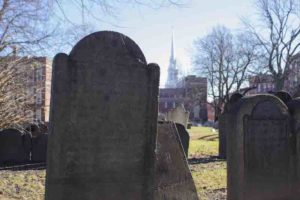
The steeplt of the Old North Church seen from Copp’s Hill Burying Ground. In the foreground is the tombstone of Captain Daniel Malcolm, a Son of Liberty detested by the British so intensely that he requested to buried 10 feet down to prevent British soldiers from digging up his remains.
The next must-see on the Freedom Trail is the place where the American Revolution began. It was here, on April 18, 1775, that two Patriots climbed into the church steeple and for only a few seconds, displayed two burning lanterns that were seen by Paul Revere and his team of riders who alerted the colonial Minutemen that British troops were on the march. This is the place where the American Revolution began. The church itself, to be honest, is not very impressive. In colonial times, religion was serious business dedicated to saving souls, and as such the church is fairly austere in its decor. But the church pews on either side of the church are lined with poster displays that give visitors insight into the events leading up to the onset of the American Revolution. Admission is fairly cheap at $6 which includes the self guided tour of the church and a visit to Captain Jackson’s Historic Chocolate Shop, located on the premises.
For those that want to dig a bit deeper, a guided tour of the church is recommended. There are two options available:
- Behind the Scenes: This 30 minute tour explores how the church works. From the bell tower where young Paul Revere rang the church bells, to the construction of the steeple itself which has been toppled twice by hurricanes, to the crypts that house the remains of Patriots long-gone, visitors will learn the inner workings of America’s most historic place of worship.
- Art & Architecture: This is a 60 minute tour that details the architecture of the church, its design and craftsmanship, as well as the artwork and sculptures inside the church. Visitors will get to see the second floor gallery of the church, which is normally roped off to general admission guests.
Old North is a convenient stop on any trip to Boston. It’s located in the North End, known for its Italian culture and restaurants, so you will probably want to stop by this section of town for the pizza alone. Make sure you follow the Freedom Trail to the Old North Church after you grab a few slices. Read more on the Old North Church HERE.
3. Faneuil Hall
Known as the “Cradle of Liberty,” Faneuil Hall once served as the meeting place for our founding fathers, as well as some of our more recent national leaders. It was here that Patriots such as Samuel Adams, Joseph Warren, and James Otis gave speeches that roused the colonists against the “taxation without representation.” Nearly a century later, abolitionists William Lloyd Garrison, Frederick Douglas, and Lucy Stone would bring their stories to the hall and rally the north against slavery. Their efforts would turn public sentiment from that of complicity to indignation and lead to the onset of the American Civil War.
However, Faneuil Hall was not initially designed as a venue for meetings and speeches. From the outset, it was supposed to be a marketplace. Boston had lacked a commercial center in its early days, and in 1740, Boston Merchant Peter Faneuil offered to build a place of commerce at his own expense. The project was approved and in 1743 was completed and opened to the public. The marketplace greatly facilitated the process of obtaining goods for the local residents, and was generally considered a success. The Great Hall, located on the second floor, would come to the fore in another three decades.
It needs to be said, however, that the funding for the hall, at least in part, was obtained by unsavory means. You see, Peter Faneuil, amongst other things was a slave trader. In recent years, this has led to some protests outside of Faneuil Hall, with some calls to remove Faneuil’s name from the building and replace it with that of Crispus Attucks. Attucks was the first man killed in the Boston Massacre and of mixed African and Wampanoag Indian descent. However, the city of Boston has made no serious attempt to change the name.
Visitors today should block about two hours to see the Faneuil Hall Marketplace, which includes the hall itself as well as Quincy Market, a collection of shops, stores and eateries that was completed in 1826 and added another 27,000 square feet of commercial space to the market. Visitors that want to engage with the city’s history should check the National Park Service calendar for programs at Faneuil Hall that occur daily.

4. Old State House
On the evening of March 5, 1770, British Private Hugh White stood alone in front of the Boston Custom House guarding the King’s treasure. Tensions had been escalating between the colonists and the British, and on this night a group of protesters had begun to form. Private White soon became the focus of their attention. The colonists taunted him, eventually throwing snowballs and ice chunks. In response to the riot, British Captain Thomas Preston arrived with a squad of reinforcements. The soldiers held their position in front of the Custom House, with the colonists continuing to harass and assault them with sticks and stones. In the panic, a soldier discharged his firearm into the crowd, causing several other soldiers to follow suit. When the smoke cleared, five colonists lay dead and six more wounded. The event became known as the Boston Massacre. Although the event occurred a full five years prior to the “Shot Heard ‘Round the World” at Concord, it has been said that the victims that fell on this cold March night were the first casualties of the American Revolution. One thing is for certain. After the Boston Massacre, relations between the colonists and the British Crown began a downward spiral that would make war inevitable.
The Custom House has moved a few times over the years, but the nearby Old State House remains. Much of the history that you will find here revolves around the Boston Massacre, including a marker located right outside the building where the shooting occurred. There is a $10 fee to tour the Old State House, which includes two talks by National Park Service staff. The first talk focuses on the Boston Massacre and the events leading up to the Revolution. This includes an interpretation of the famous Paul Revere engraving of the Boston Massacre, which was used by Patriots including Samuel Adams for propaganda purposes. The differences between the artwork and the reality of what actually happened are considerable and discussed on the tour. The second guided talk revolves around the artifacts in the Old State House and includes actors in period costume discussing life in 18th century Boston. Hear stories of some not so famous Bostonians who will be sure to get you excited about the pre-Revolution years.
The Old State House tour is Knockabout’s one of the top two sites on Boston’s Freedom Trail (split with the USS Constitution tour). Although there is an admission, it is well worth the price. If you happen to be taking an Old Town Trolley hop-on, hop-off tour then admission is included with your trolley fare.

5. Granary Burying Ground
Boston has its share of historic graveyards, with the remains of many famous, sometimes notorious figures within their gates. But Granary Burying Ground is possibly the highest profile cemetery in town. It contains the remains of notable forefathers like Paul Revere, Samuel Adams, James Otis, and John Hancock. Also buried here are the five victims of the Boston Massacre, in a common grave together along with 11 year old Christopher Seider, who was shot and killed by a Loyalist merchant 11 days prior to the Massacre during a protest. Samuel Adams politicized his death, which heightened tensions between the colonists and the British was a catalyst in the violent protests on the night of the Massacre.
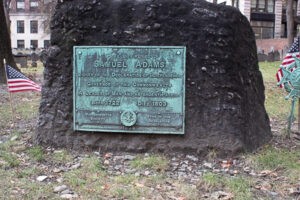
Samuel Adams is one of many notable Patriots laid to rest at the Granary Burying Ground near the Boston Common.
The Granary Burying Ground contains approximately 2,300 tombstones, which is a lot for such a confined space. But what is more impressive is that more than double that number have made this ground their final resting place. It is estimated that 5,000 citizens are buried here, which means that its really crowded underground. Also, the tombstones themselves may or may not be resting atop the proper grave. Originally, the graves were arranged in an erratic manner, with livestock on site to chew back the vegetation. However, in the mid 1800’s the lawnmower came into existence, and the tombstones were rearranged in rows to make lawn care easier.
Visitors can take a self-guided trip around the graveyard free of cost, or as part of the Freedom Trail Foundation’s Walk Into History tour, which cost $14.
Knockabout Boston Audio Tour
Take a self-paced walk through Boston’s most historic neighborhoods. Includes all audio files streamed directly to your smartphone. No apps, no accounts, no passwords to remember.
6. Boston Common
America’s oldest public park is located in the heart of Boston. Established in 1634, Boston Common was originally used as a central location where farmers could graze their livestock. However, the population of Boston grew quickly, as did the number of cows and soon the city had to place restrictions on the number of cattle feeding at one time to prevent overgrazing. The Common was also used at a gathering place for the citizens of Boston, and in the mid to late 17th century even had its own hanging tree. Officially called the “Great Elm Tree,” it was put to use for hanging criminals, which at the time not only consisted of murderers, but included accused witches, non-compliant Indians, and Quakers. These public executions were a great diversion from the rigors of everyday life and often drew a large crowd at the Common.
By the 1830s, pasturing cows was prohibited and the land was converted wholly to recreational space. Over the generations there have been many upgrades to the park. Today, visitors can see several memorials and monuments, including:
- Boston Massacre/Crispus Attucks Monument: Standing 25 feet tall, the female figure representing liberty holds a broken chain to represent freedom, and crushes the British crown with her foot. At the base of the monument is an engraving depicting the Boston Massacre.
- 54th Regiment/Robert Gould Shaw Memorial: This small but powerful memorial honors the first all-black volunteer infantry Regiment during the Civil War. These union soldiers are most notably remembered in the 1989 motion picture, Glory. The Massachusetts 54th Regiment saw combat in the South, and received accolades for their bravery. During the Battle of Olustee in Florida, where they provided cover for the Union withdrawal, the men of the 54th were tasked with recovering a disabled train filled with wounded Union soldiers. Heroically, they attached ropes to the locomotive and manually dragged the train along the rails for three miles to the nearest Union encampment. In addition to their valor in combat, the men of the 54th were also known for demanding pay equivalent to their white counterparts. When the Department of War failed to pay the salary that was agreed upon during recruitment ($13/month), the 54th refused their wages until the agreement was honored. Congress eventually paid the soldiers their full salaries after approximately 18 months of service. The 54th Regiment memorial is discussed on the Freedom Trail Foundation’s Walk Into History tour, as well as the National Park Service’s Black Heritage Trail tour.
- Soldiers & Sailors Monument: Located on a small elevation called Flag Staff Hill, this monument and sitting area was dedicated in 1877 in honor of those soldiers and sailors that had fought and died in the American Civil War. It is the largest monument on the Common, and the most visited. Although thousands of visitors and locals alike will sit at the base of this monument each year, few will actually walk close enough to read the inscription at the base of the pedestal:
TO THE MEN OF BOSTON
WHO DIED FOR THEIR COUNTRY
ON LAND AND SEA IN THE WAR
WHICH KEPT THE UNION WHOLE
DESTROYED SLAVERY
AND MAINTAINED THE CONSTITUTION
THE GRATEFUL CITY
HAS BUILT THIS MONUMENT
THAT THEIR EXAMPLE MAY SPEAK
TO COMING GENERATIONS
- Parkman Bandstand: During the summer, visitors and residents can gather around the bandstand to enjoy free concerts on the Common. It was constructed in 1912 and is located on what was originally a small pond where cows would graze and drink. The pond was filled in during the mid 19th century after cattle grazing was banned from Boston Common.
The Others
There are 10 more sites to see on the Freedom Trail, and if time permits, then you may want to consider seeing some of them. Honestly though, some are not worthy of the time. The Old Corner Bookstore, for instance should probably be skipped unless you are in the mood for a burrito. It has been leased out to the chain of Chipotle southwest restaurants. I love Chipotle, I do. But it is not something that I would make a point of having while in the Boston.
The remainder of the Freedom Trail sites are listed below for your reference:
- Bunker Hill Monument: This is actually a nice site that commemorates the Battle of Bunker Hill, where Colonel William Prescott, low on ammunition, commanded his militiamen, “Don’t fire until you see the whites of their eyes!” It was the first battle of the American Revolution where the British met with strong resistance and knew the fight was going to be long and costly. If you have time in your day, then check it out in Charlestown prior to or after you tour the USS Constitution. It’s just a bit out of the way on foot.
- Paul Revere House: Allow 30 minutes to complete this self guided tour through the residence that Paul Revere called home. There are some poster displays with interesting tid-bits of history as well as some colonial staff members to answer your questions.
- Copp’s Hill Burying Ground: Located in the North End, this is another graveyard with some notable burials, including Cotton Mather, the judge who presided over the Salem Witch Trials. If you do find time to visit, look for the tombstone of Captain Daniel Malcolm (on the left side of the yard as you enter). He was so hated by the British that they used his tombstone for target practice during the British occupation of Boston. You can still see the pock marks from their musket balls on the stone.
- Boston Massacre Site: This is officially listed as a stop on the Freedom Trail, but it’s located right outside the Old State House and covered during that tour.
- Old South Meeting House: Known as the location where the Boston Tea Party was planned, this church is a fine stop on the Freedom Trail and interesting enough, but if you have already been to the Old North Church, then this may seem like a repeat. It’s not expensive for the self-guided tour, but not free, either.
- Old Corner Bookstore: The building is old, constructed in 1718, but that’s about it. It is now leased to Chipotle, where you can get burritos. It really should not even be mentioned as a Freedom Trail site. Stop if you’re hungry, otherwise skip it.
- Boston Latin School/Benjamin Franklin Statue: Boston Latin is the oldest public school in the United States. But it is not located here anymore. It is currently located near Fenway Park and the Longwood Medical District. The Freedom Trail site is a former location of the school. There is no guided tour available, so it’s best to skip this one.
- King’s Chapel/King’s Chapel Burying Ground: This church, like the Old North Church, is still is use for worship services today and the interior is strikingly similar in appearance. It is Boston’s oldest church, built in 1686. The graveyard outside is interesting, but by this point on the Freedom Trail you have likely seen enough tombstones to last a while.
- Park Street Church: Located between the Granary Burying Ground and the northeast edge of Boston Common, you are sure to walk past this church in your travels. The steeple at one time made Park Street Church the tallest building in the United States from its construction in 1810 to 1828. It is a Freedom Trail site for two reasons. During the War of 1812, the Americans used the church as a storage location for gunpowder and ammunition, earning it the moniker of “Brimstone Corner.” It was also the site where prominent abolitionist William Lloyd Garrison delivered his first major speech against slavery. Details and facts on Park Street are covered in the Freedom Trail Foundation’s Walk Into History tour, but otherwise just view it from the outside .
- Massachusetts State House: This is where the governor and state legislature meet and do business.
Now where?
There’s just so much to see and do in Boston, and the history is only part of it. You still have to see Fenway Park, whether there’s a game going on or not. Then there’s the Samuel Adams Brewery tour, Boston Harbor Islands, and much more. If you have any questions about the Freedom Trail or visiting Boston in general, feel free to send along an email to [email protected].
Happy Travels,

Gregg


